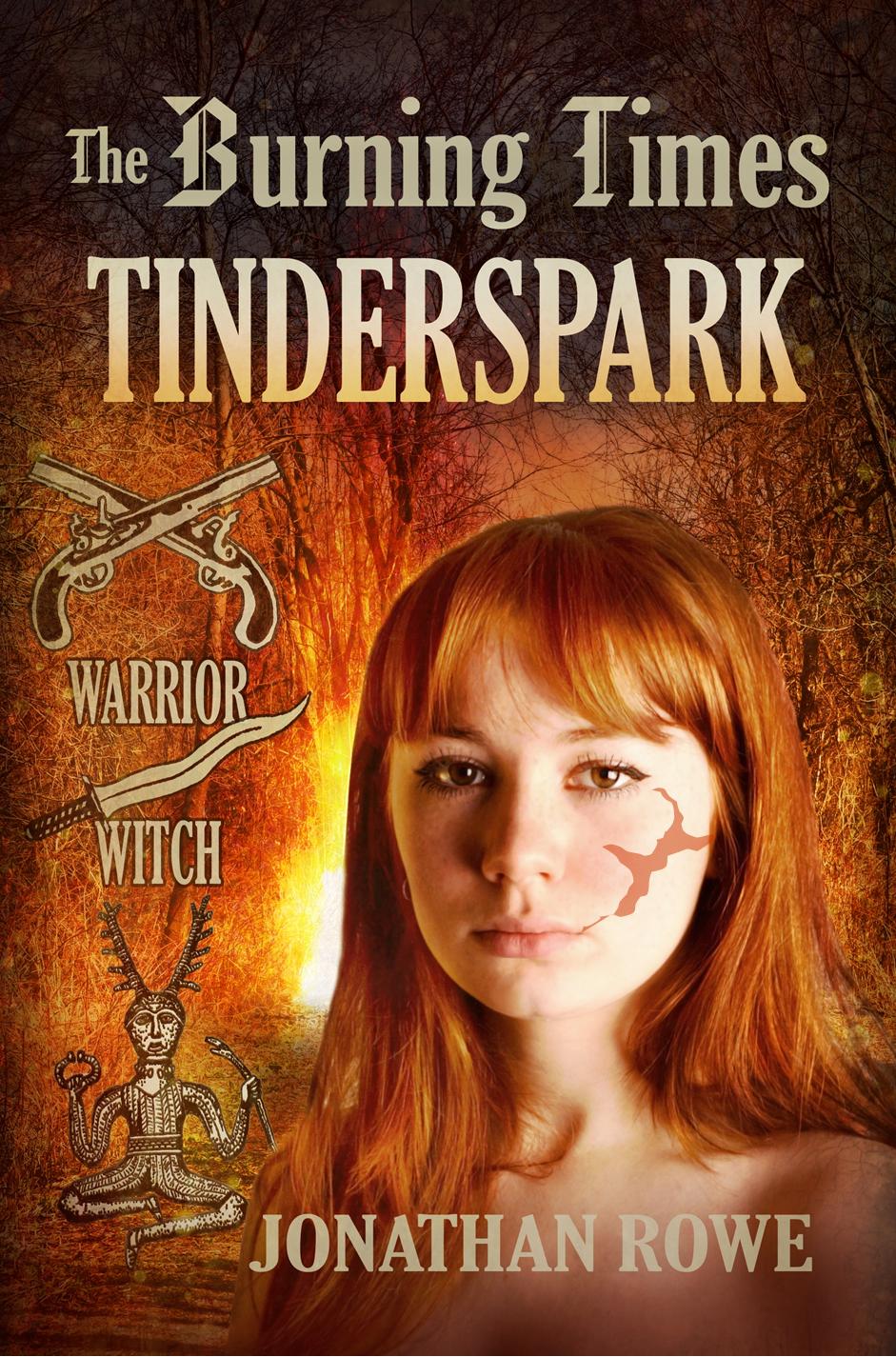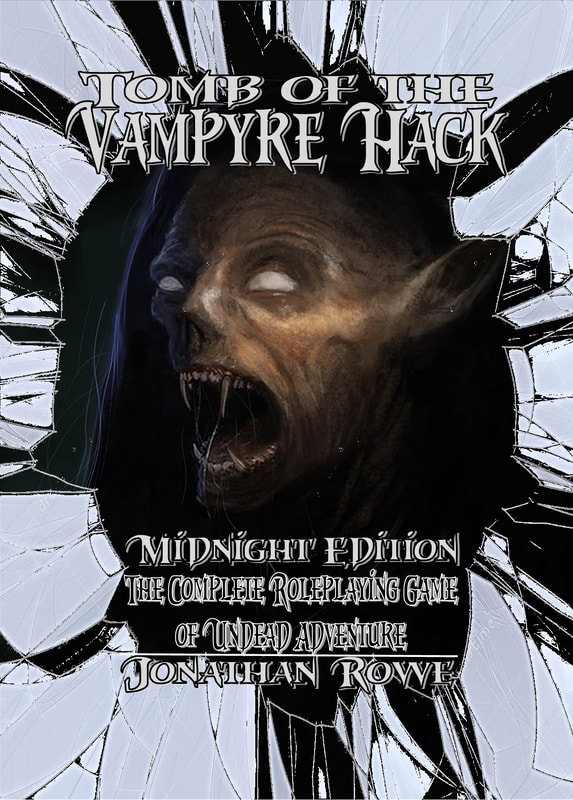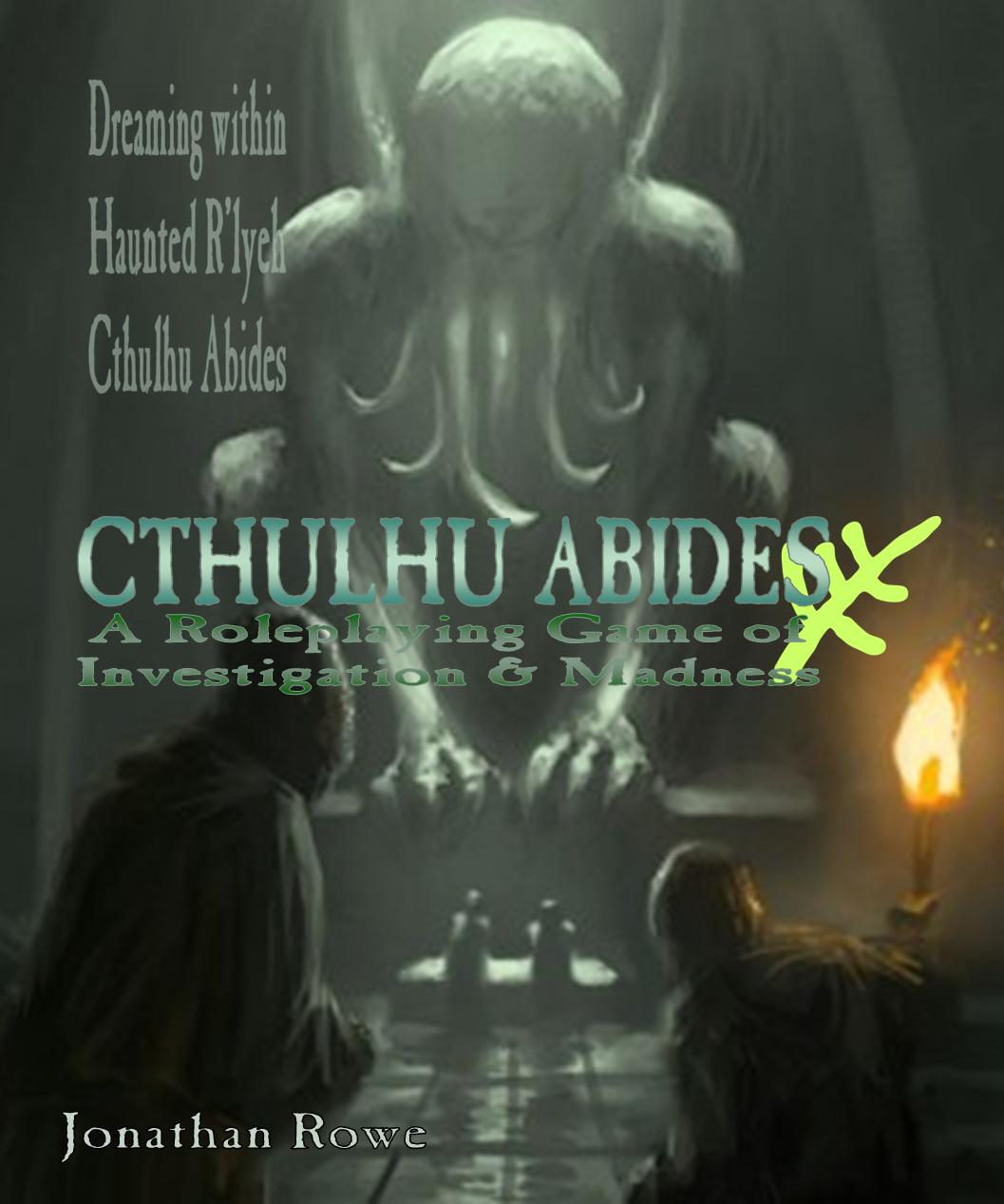|
Back in the early-1980s, White Dwarf became the premier magazine for the roleplaying hobby. In America, Dragon reigned supreme in its support for D&D, but White Dwarf covered the whole hobby (more or less) and was unequalled for the quality of its journalism and contributions. There really were some fantastic scenarios for D&D and Runequest in particular, a brilliant column by Andy Slack supporting Traveller, a bestiary feature that inspired most of the AD&D Fiend Folio and great articles on campaign design generally. My favourite issue of White Dwarf (24) and the Fiend Folio, a sequel to the AD&D Monster Manual containing a mixture of monsters from TSR modules and the pages of White Dwarf. All things must come to an end and as White Dwarf moved into its 50s (in 1984) there was a perceptible dip in the imaginative temperature. Don't get me wrong: there were still some cracking scenarios to be published and most issues had a solid article or two, but it stopped being groundbreaking. The RPG companies were getting into gear supporting their own products with increasingly thoughtful modules and campaign settings. There was just less for a magazine like White Dwarf to do. Perhaps also, less consensus in the hobby over who it was primarily for. Ultimately, White Dwarf would turn into a showcase for Games Workshop's own products, but that was still a few years down the line. There was life in the old dog yet. One promising sign of continuing relevancy was a trend for scenarios for a new RPG: Chaosium's Call of Cthulhu, now a mighty industry behemoth but then a quirky outlier in the gaming constellation, pitching a roleplaying experience of dread, futility and, ultimately, madness and death in the world of H P Lovecraft's distinctive American Gothic. Call Of Cthulhu had been reviewed back in White Dwarf 32 (1982), with reviewer Ian Bailey clearly as impressed by the game as he was perplexed by how to make use of it (a common response at the time). He also observed that the game was "U.S. orientated and consequently any Keeper ... who wants to set his game in the UK will have a lot of research to do." The original Call Of Cthulhu RPG (the best cover too) and the White Dwarf issue that reviewed it - along with an excerpt from Ian Bailey's review Of course, since this was the Golden Age Of White Dwarf, it only took 10 issues for hobby maestro Marcus L Rowland to appear in the magazine, offering 'Cthulhu Now! - Call of Cthulhu in the 1980s.' The article grounds itself in an early '80s setting with an illustration of a punk studying a Job Centre noticeboard while a tentacled gribbly writhes up behind him! A follow-on article offered three contemporary scenarios: Dial 'H' for Horror, Trail of the Loathsome Slime, and Cthulhu Now! This opened the floodgates for White Dwarf contributors to submit a range of Call of Cthulhu material, including Cthulhu in space (The Last Log, by Jon Sutherland, Steve Williams and Tim Hall, from issue 56 in 1984) as well as Cthulhu in rural 1930s England (The Watchers of Walberswick by Jon Sutherland, from issue 50 in 1984) and Cthulhu in British Mandate Palestine (The Bleeding Stone of Iphtah by Steve Williams and Jon Sutherland, from issue 60 in 1984) . You'll notice Sutherland's name recurring? He was quite prolific in 1984! These early scenarios are typical for White Dwarf: they are concise but erudite, with a close attention to period and setting; they are thoughtful affairs, far removed from the pulpy excesses of Chaosium's own globetrotting campaign packs (like the epic Masks of Nyarlathotep, also from 1984 and closer in tone to a Bond movie than a Lovecraft story - a really good Bond movie spliced with Indiana Jones but pretty far from Lovecraft's cerebral interests). I suppose Jon Sutherland's efforts were attempts to take Call Of Cthulhu by the horns and deliver a narrative experience that feels like it really could be a horror short story by Lovecraft himself: very low-key but also, whatever their ostensible setting, very British. All this preamble is the context for me blowing the dust off White Dwarf #60 to run Sutherland's The Bleeding Stone of Iphtah on a group of three players over two evening sessions. Why pick this scenario? Well, it was used as the final scenario in the 1984 Games Day official Call of Cthulhu Competition and the introduction boasts that it provides "an interesting one-off session or addition to an existing campaign" - which sounds ideal for my needs. Next, the question of which rules set to use? That might sound odd, but post-CoC rules have proliferated recently and my respect for Sandy Peterson's imaginative achievement with Call of Cthulhu is only matched by my distaste for CoC's rules themselves, which are Chaosium's Basic Roleplaying system, with the addition of a diminishing Sanity (SAN) stat that spirals down to nothing as the Elder Nasties emerge. Lots of skills expressed as percentages, professions defined by skills and a lumbering combat system that manages to simultaneously make player characters too flimsy (any Mythos monster will squish them) and too tough (you have to shoot or stab someone several times before they fall down). The two contenders to replace CoC are Paul Baldowski's The Cthulhu Hack and Joseph D Salvador's Eldritch Tales. You can find both on drivethrurpg, but Cthulhu Hack is also available from the nice people at Zatu I've written about Baldowski's Cthulhu Hack before and, like most Hack games, it's great for pick-up-and-play. There are only two problems. One is that it tends more towards the pulpy action-adventure side of the CoC congregation and the other thing is that its Hack-derived mechanics don't greatly resemble classic CoC at all; both are problems for adapting the reserved tone and low-key assumptions of Sutherland's CoC scenarios. No, Salvador's game is the one I choose for this. For those who don't know it, it bills itself as Lovecraftian White Box Roleplaying. This means it takes the bare rules and conventions of Original D&D, especially the iteration known as White Box: Fantastic Medieval Adventure Game by Charlie Mason. Now, I fell in love with White Box when I attempted a long D&D-style campaign during 2020's Lockdown, so I'm excited by this. Mason's White Box is free (FREE!) on drivethruprg but a physical copy is stupidly cheap on Amazon too Eldritch Tales is a beautifully presented indie RPG product with evocative (and pleasingly amateur-style) art, fantastic layout, a delightful overview of the Lovecraftian milieu and careful explication of the (essentially simple) rules. Only the presence of a much-needed index would complete my bliss! The game invites you to create characters by rolling 3d6 for the classic six characteristics (Strength, Dexterity, Wisdom, etc.). Non-combat 'Feats' are attempted by rolling a d6 and you succeed on a 6 if your relevant characteristic is low (6 or less), on a 5-6 with ordinary characteristics and on a 4-6 of your relevant characteristic is 15+. Having a particular skill either adds +1 or +2 to the roll or lets you roll twice, choosing the best score - or sometimes both. So much better than faffing around with percentage dice. There are four character classes: Antiquarians, Combatants, Opportunists and Socialites. Within your broad class, you also roll or choose an Occupation that might give you particular skills, funds or possessions. Your Character Class gives you a d6 Hit points at first level (d6+1 for those hardy Combatants). Most weapons do a d6 damage (d6-1 for a thrown knife, d6+2 for a shotgun). Yes, every exchange of violence is potentially life-ending, especially as going up a level usually adds just +1 to your Hit Points. The levels only go up to 6th by the way. I think if your investigator gets to 6th level (with usually 3d6+1 HP), you should interpret that as the universe telling you not to push your luck any further. Insanity is a score that goes up during nerve-wracking encounters. If it ever gets to the level of half your Wisdom you gain a permanent insanity and if it ever matches your Wisdom you become a gibbering NPC. There are short-term shocks for people who fumble their Insanity saving throws (roughly 10% of the time) or gain 3 Insanity in one go (not that uncommon either once gibbous entities come calling). Two nice features of Eldritch Tales are the tables to roll up your Contacts (you have quite a few of these) and the table to roll up your Character Relationships. There are 20 of these suggestions, ranging from 'You are in love with another character (or their spouse or sibling)' through to 'You and another character witnessed something astounding.' These are so helpful for turning a bunch of numbers on paper into a team of investigators ready to risk life and sanity to investigate eldritch mysteries together. Past that point, Eldritch Tales is old-skool D&D: you roll saving throws and roll to hit Armour Class, there are familiar spells and monsters from the Mythos, you gain experience points from defeating the monsters or solving mysteries, you go up levels. The Bleeding Stone of Iphtah by Jon SutherlandThe scenario kicks off in Jerusalem in the 1920s, a time when the Palestine Mandate was overseen by the British Empire. It's a fantastic setting to launch any story - so good in fact that Kenneth Branagh (clearly also a fan of '80s White Dwarf) stole the idea to begin his recent film of Murder On The Orient Express. The PCs are Percy Goodfeather, a Gentleman Socialite who is searching for his vanished sister Darcy. He brings with him his university friend Howard Harris, an Australian Occultist Antiquarian: the two bonded when another friend disappeared, never to be seen again, during one of Howie's rituals in the college rooms. Percy's largesse helps fund Howie's growing drug addiction. They have been brought to Palestine by Joe Birdwell, an Opportunist Outdoorsman who knows the region and its peoples. Birdwell is secretly in love with Darcy Goodfeather, but he knew her as Dahlila de Gul, a torch singer and medium; he was an enthusiastic participant in her demimonde orgies until her strange disappearance. He has tracked her to Jerusalem, but not told Percy of his sister's double life. What's Going On? Actually, none of this is in Sutherland's scenario; these are incidents derived from Eldritch Tales' table of relationships and a few Tarot card draws to help brainstorm a plot. But I can tie it together
Start With Action The scenario starts with the PCs browsing a museum in Jerusalem when they are approached by a shifty Turkish gentleman named Lakey who wants them to take on a job for his boss, a businessman named Lotto who owns the Domino Club and is obsessed with antiquities. This is a run-of-the-mill CoC plot hook and the two NPCs are a delightful hommage to Peter Lorre's Ugarte and Sydney Greenstreet's Ferrari from Casablanca (1942). The sweaty grifter and the intimidating black marketeer Except that being led by the hand by a bunch of NPCs to a patron who explains why they have to go to a dig site in the Judean Mountains and chivvy along an archaeologist called Foster who has promised to bring back treasures for Lotto but has so far turned up nothing ... well, that's a slow start my friends. So instead we have Joe Birdwell see Darcy pass by in the street - and he jumps out of the window to give chase. Darcy is being stalked by dangerous looking Bedouins but when Joe reaches her she reacts without recognition. One of the Bedouins fires a gun at Darcy, but Joe is hit and Darcy takes off in a car while the street erupts in confusion. Percy and Howie arrive to find an Arab doctor treating Joe and warning them that the Bedouins were tribesmen or a cult called Pachalim (made up name but it'll fly) and very dangerous customers. A Side Plot Develops The PCs are supposed to take the job from Lotto and journey to the dig site at Iphtah, but my ad libbed side plot has taken over the story. Joe goes to find out more about the Pachalim from a contact - an Arab businesswoman nicknamed 'the Ibis' (for her pronounced nose). This vociferous widow with her melodramatic flights of insulting rhetoric quickly becomes one of my most beloved NPCs! Joe parries and feints and handles her beautifully and ends up shadowing a pair of Pachalim goons as they invade the seedy guest house where Darcy is staying. Joe gets knocked out when he tries to intervene but, waking as a prisoner of the Pachalim, learns that they are trying to stop 'the Forgotten' (almansiayn) from carrying out a ritual. Yup, they're the good guys. Joe is released, doped up with hashish, and stumbles home to the Domino Club. Percy and Howie have been pulling their own contacts, find out a lot about Foster and discover that the local gangs that Lakey buys drugs from have acquired new weapons in the form of Rot spells that do horrific things to their victims. When the three PCs visit Darcy's guesthouse the next morning, they find Darcy has moved on, but one of the Pachalim is there, dead from a Rot spell, and clues point to Iphtah where Prof. Foster is digging. Yes, this is me trying to re-direct things because this side plot has taken up the evening and we haven't even arrived at the location of the actual scenario. Journey To Iphtah The main scenario takes place at the dig site at Iphtah, where Prof. Foster is going mad. The Professor is using opium to keep the Yithians out of his head, but he's run out of drugs and thinks that Lakey (his supplier) is holding out on him. The PCs get to snoop around the site, spy on the erratic Foster and realise strange things are afoot, but this is a programmed scenario where the PCs have to be onlookers to certain events and no amount of roleplaying or researching will speed them up. In the middle of the night, Foster murders Lakey to get at the drugs, then overdoses himself. The PCs manage to stop the truck escaping with Lakey's corpse by shooting out a tyre. They are left at the dig site with no Lakey, no Professor but a mysterious red stone - the Bleeding Stone of Iphtah. This is where it gets creepy, because a bunch of Dimensional Shamblers show up if anyone tries to remove the Stone from the site without performing the ritual. I hide the Shambles in an eerie dust cloud (for extra creeps) and use them as silent sentinels who murder the Arab labourers to establish their monster bona fides but otherwise leave the PCs to explore. There's a buried shrine to be found and opened and the Stone has to be 'bled' inside a pit to power up the ritual and then ... err .. and then ... ah, well, that's about it really. The PCs are free to leave. Perhaps suspecting that things could turn out rather anticlimactic, Jon Sutherland suggests a raid by snooping Bedouins and I've already set up the Pachalim for exactly this sort of work. The PCs end up stuck in the shrine with the Pachalim outside with rifles in a tense standoff. Then Howie the Antipodean Antiquarian leads the charge, shoots the Pachalim sheikh dead, but is riddled with bullets himself. Percy and Joe shoot their way to safety and the Shamblers disembowel the fleeing Pachalim. Percy and Joe get to leave the site, supervised by the silent Shamblers. And that's, kind of, where it ends. The scenario doesn't make it clear just how the ending is supposed to go down. My players decide to return the Stone to Lotto and continue their pursuit of Darcy. They are unaware of the role they have played in facilitating the arrival of the Yithians by performing the ritual. Evaluating the Scenario and Eldritch TalesThe Bleeding Stone of Iphtah is a rather slight affair. In fact, all of Jon Sutherland's 1984 scenarios are oddly muted. I think they were written in deliberate contrast to the gangbusters style of American CoC material, to be atmospheric, unsettling and cryptic, rather than kinetic, deadly and cosmic in scope. In all of them, the Mythos is a marginal force, largely operating off stage. The PCs spend most of their time exploring a realistic but evocative location, then at the very end there's a Mythos intrusion. The central problem is that there's no way for the PCs to understand the significance of what's been going on or their role in it. Now, in an ongoing campaign this is acceptable - further down the line, the PCs might uncover information which casts a revelatory light on the goings-on at Iphtah and realise that, by performing the ritual, they brought the Yithian-apocalypse a dread step closer. They might then understand why Foster was taking drugs and why the Shamblers appeared to stop them leaving with an un-bled Stone. But as things stand, there's no way to learn any of this - and this was a scenario, you will recall, billed as "an interesting one-off session or addition to an existing campaign." One wonders what the contestants at Games Day '84 made of it. I know some people will retort that Lovecraftian roleplaying is supposed to be mysterious and it's a good thing, not a bad thing, if a scenario leaves players puzzled and disquieted. Yes, that's true, I suppose, but my taste is more for a scenario that places the players in positions of at least partial knowledge. Too much of Iphtah was meaningful only for the GM, even with my improvisations. But these are minor gripes and I should perhaps essay another Sutherland scenario - perhaps the well-received Watchers At Walberswick - before forming a judgement on his output. Eldritch Tales served us very well and is now my go-to RPG rules set for Coc material. I was pretty generous in handing out experience points for roleplaying (and why not? the roleplaying was stellar!) and of the two characters who survived, Percy reached second level (losing some Insanity and gaining that precious extra Hit Point) with Joe just missing his level-up. I'd love to dust off a larger campaign pack - perhaps Shadows of Yog-Sothoth - to run using Eldritch Tales. However, I became very aware of how flimsy Eldritch Tales PCs are compared to CoC: every gunshot or knife wound is potentially lethal. Perhaps swashbuckling Cthulhu Hack would be a better fit for those pulp-y Chaosium campaigns? But for the studious and low-key Call Of Cthulhu scenarios that White Dwarf and Jon Sutherland were publishing in the mid-1980s, Eldritch Tales is ideal.
0 Comments
I took a long break from running RPGs. I started working on my second edition of The Ghost Hack and then my imagination was entirely hijacked by ghost stories. I started writing a ghost story a day for the Daily Ghost (and you can see a selection in the Archives on this website). But ... I'm back, running a Cthulhu-esque scenario for some old friends over a combination of Zoom and Google Hangouts. The story is set in Ancient Egypt around 1500 BCE - more of that anon - and I was determined not to use the classic Call Of Cthulhu rules system. I went with The Cthulhu Hack and more of that anon too! You Got A Problem With The Classics?Well, yes and no. Look, I was there, back in '81, when Sandy Petersen's Call of Cthulhu landed and rewrote everything we thought we knew about RPGs: non-combatant characters, mysteries not conflict, madness not death (or maybe, as well as death), non-heroic protagonists who were hopelessly outmatched by the monsters. Seven editions in and the first ed. still has the best cover Ian Bailey's review in White Dwarf 32 (1982) gives you a flavour of how novel CoC was back then: Like everyone else, I adored CoC and its world-spanning campaign pack Masks of Nyarlathotep (1984) remains the high water mark for this sort of RPG adventure. Masks ... you just messed with the best! But CoC isn't perfect and its flaws have - for me at least - intensified over the years, perhaps due to a growing gulf between the way I like to roleplay and GM and some of the assumptions 'baked in' to early-'80s roleplaying that the game just can't shed. Partly it's the old Basic Roleplaying system that Petersen inherited from Runequest. I didn't mind Runequest with its stylised Bronze Age setting but some of the quirks in BRP became downright weird in a modern investigative setting. Like the flat percentage skill checks which meant that a Professor of Babylonian Antiquities might outright fail to read a passage in cuneiform by fluffing a Read (Ancient Babylonian) test. Not get the gist but miss the details or misinterpret a crucial passage, but outright fail to make any sense of it at all. Then there's the incentive to let the least-skilful PC attempt any task first - because the XP system rewards low-skill characters for succeeding more than high skill ones. When a lock needs to be picked, the fumble-fingered psychologists and dilettantes all have a go and only if they fail does the private detective sigh, step forward and spring the lock. And of course the Sanity system with its infamous SAN checks, that results in characters either being utterly unfazed by whatever they see, or turning into gibbering wrecks, with nothing in between. My biggest problem was the nature of investigations themselves. In CoC it's usually vital that the PCs at some point find a secret compartment, trail a suspect or decipher a text. But if everyone fails the Spot Hidden or Read Languages roll, that simply doesn't occur. Ken Hite gets round a few of these issues in Trail of Cthulhu, which uses Robin Laws' Gumshoe system to enable a sharper focus on clue-gathering and investigation. My own Cthulhu Abides tries to tackle investigation and sanity: it's a glorious mess (in hindsight) but reviewers were very kind about my sanity rules. One of these games is a slick product by a pair of RPG luminaries; the other is by me! Keep It Simple, Shoggoth!Cthulhu Abides needs an overhaul and I'm not getting into that just now. CoC and ToC are both too clunky for my taste. I'm wanting to run a fast paced Lovecraftian adventure in an exotic setting and I want the players to focus on their characters and environment, not their skills or numbers. This gives me two choices. The two choices Eldritch Tales is a lovely product. It's a White Box adaptation of Call of Cthulhu, which means it takes the Original D&D rules architecture - six classic characteristics rolled on 3d6 each, four character classes, levels, Hit Dice, saving throws - and attaches an Insanity score and a Feat system for doing skills as well as the usual spells (very much in the D&D format), monsters, experience points and the like. The physical book is lovely, with heavy sepia-tinted pages, nice maps of New England and Arkham as well as essays on Lovecraftian sensibilities and plot construction. The D&D tropes, easy to deride for being artificial, are here presented so simply that you barely notice them and they fit in strangely well with the short mayfly existence of Cthulhoid investigators. The Feat system (roll a d6, try to get a 5 or 6, get bonuses or penalties, roll twice if it chimes with your occupation) is very elegant. You can buy Eldritch Tales (physical or PDF) from drivethrurpg. It's published by Raven God Games and is written (and largely illustrated) by Joseph D Salvador. The Cthulhu Hack is a different sort of beast: slimmer (52 pages compared to 220 pages) and altogether frothier. It takes the bare bones of David Black's versatile The Black Hack and runs with that game's innovations. TCH also takes Original D&D as its departure point, but it travels further from its parent. There are the familiar six characteristics rolled on 3d6. There are Hit Dice. But in place of fixed classes there are Archetypes and an invitation to abandon even them and construct freeform characters around a triad of potent abilities. For example, build in 'Better Alone,' 'Jack in the Hole' and 'Surprise Attack' and you've got some lone assassin or scrappy kid. TCH takes the Hack idea of resource dice. You roll these dice when you use items or powers and on a 1-2 they exhaust and shrink down to the next-lowest die; so d8s shrink to d6s and d6s shrink to d4s but when a d4 exhausts that resource is entirely gone. This beautifully abstracts things like wealth. You go around buying things until your Wealth Die completely exhausts, at which point your cheques start bouncing. But the real innovation is when this applies to investigation. You have two investigative resource dice: Flashlights (physically looking for things or researching them) and Smokes (talking to people, either nicely or through intimidation). These abilities automatically work until the die fully exhausts. Let me spell this out. Your professor has a d10 die for Flashlights. You search for a secret door. You automatically find it, but roll your die and on 1-2 it shrinks to a d8. In the secret room, you look for a hidden compartment. Again, you automatically find it, but on a 1-2 your d8 shrinks to a d6. Inside is a scroll in Babylonian cuneiform. You automatically translate it, but on a 1-2 your d6 shrinks to a d4. Once your d4 is gone, you won't be finding or translating anything else. Of course, these is deeply artificial. Just why would a character 'run out' of investigative ability? But it achieves something important in narrative terms. If the PCs look in the right place or talk to the right person, they automatically get the clue. The issue is not "will I succeed in a roll to get the clue?" but "is it worth making the roll to get a clue?" Players need to weigh up whether they are better conserving investigative resources and figuring things out by themselves, or make the rolls and risk exhausting their precious dice. The Cthulhu Hack is available as physical copy or PDF from drivethrurpg or (physical only) from Lulu. It's published by Just Crunch Games and written by Paul Baldowski. Shadows Over KarnakThe Cthulhu Hack wins the face-off, although I'd probably go with Eldritch Tales if I intended to run a proper Cthulhuesque campaign rather than this extended one-shot. Since the setting is Thebes during Egypt's 18th Dynasty, an evocative character sheet is needed: You can see I've got the six classic characteristics, with Wealth and Hit Dice abstracted as resource dice rather than scores. In place of the pulp detective themes 'Flashlights' and 'Smokes' I've got the Eyes of Ra and Horus. Sanity is replaced by Maat (the Ancient Egyptian concept of harmony and balance).
The scenario is set towards the end of the reign of Hatshepsut, Egypt's famous female pharaoh. The queen has just returned from the far-off land of Punt, bringing back a Puntite delegation who worship strange and nameless gods. Thebes becomes a party town to welcome the guests. Among all the revelry, the ageing Royal Architect is murdered and one of the PCs is implicated in the crime. Cue, investigation to unearth the true murderer and expose a plot that threatens the entire realm ... perhaps even the planet. I'll keep readers posted on how things unfold and afterwards I'll publish the scenario. The setting has already thrown up some quirky details, like the Handmaids of Isis (Thebes' frighteningly competent all-female civil service) and the danger of knowing even the slightest detail about a pharaoh's tomb.
|
30 Minute Dungeons
Essays on Forge
FORGE Reviews
OSR REVIEWS
White Box
THROUGH THE Hedgerow
Fen Orc
I'm a teacher and a writer and I love board games and RPGs. I got into D&D back in the '70s with Eric Holmes' 'Blue Book' set and I've started writing my own OSR-inspired games - as well as fantasy and supernatural fiction.. Archives
July 2024
Categories
All
|
||||||||||

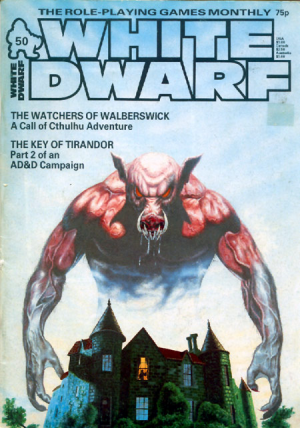



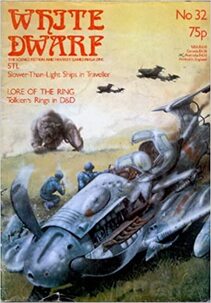


























 RSS Feed
RSS Feed


